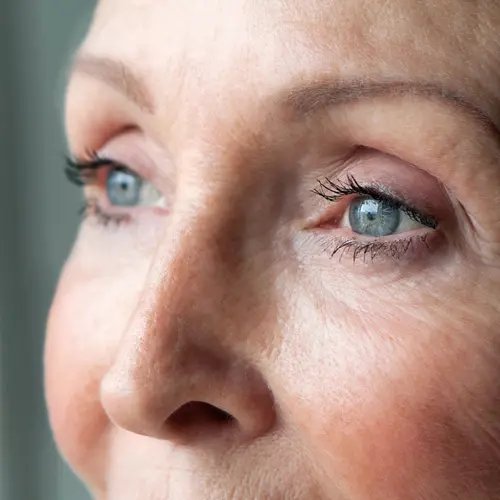Age-related macular degeneration (AMD) gradually affects central vision in one or both eyes while leaving peripheral vision (on the sides) intact. This peripheral vision – encompassing everything you can see above, below, and to the sides without turning your head – can become an important tool for maintaining independence when living with AMD.
Nilima Tanna, a low-vision occupational therapist at the University of California, Irvine’s Health's Gavin Herbert Eye Institute, spoke with WebMD about low-vision rehabilitation therapy and how it helps people with AMD maximize their remaining peripheral vision.
WebMD: How can learning to use your side vision better make daily life with AMD easier?
Tanna: Most of the people who have AMD complain about not being able to see faces, watching TV, and reading for information or pleasure (including on computers and phones). It's also things like seeing the numbers on the microwave, seeing the markings on the stove or their oven. And so learning to see with your side vision teaches you to use the vision you have left to get better at doing these things.
Usually in therapy we start with something big, like TV viewing or watching somebody's face, before we go into the smaller tasks of reading. Reading is very difficult because that eye movement is even more subtle. Therapy also helps a lot with writing, such as signing your name.
WebMD: Which specialists can teach people how to use their side vision better?
Tanna: Usually it's occupational therapists who specialize in low-vision rehabilitation and also certified low-vision therapists. Generalist occupational therapists don't have the training to do this.
WebMD: How exactly do these specialists help someone with AMD work around the unique pattern of blurry or blind spots in their central vision?
Tanna: People need to first learn what those spots mean to them when they're looking at things because when they look at a face, it's not like they don't see the whole face – they might just not see somebody's eyes or their hair. So learning where it is they don't see is so critical to teaching them to use their side vision.
We need to teach them what position of the eye gives them the blurriest view and then how to move that blurry part out of the way. There's this really nice balance of how far up do you shift your eyes or sideways or whatever position you need to in order to get to your "sweet spot" for each activity, where you can see a little better.
A lot of times, people have been so used to moving their head and their eyes to see things. And the absolute first thing is to teach them not to move their head and then to keep their eyes steady once they've found their sweet spot.
WebMD: What's therapy like if someone has AMD that affects both eyes?
Tanna: When a person has macular degeneration in both eyes, the location of spots in your right eye may be different than the spots in your left eye. And then when you have both eyes open it may be a different pattern of spots. So, part of what we do is figure out whether using one eye or both eyes gives you the least amount of interference.
I just have to clarify that there are many factors that make it difficult for a person with macular degeneration to see things well, so the blind or blurry spots are just one thing. But the cells in the middle of our central vision are also responsible for color, responsible for contrast. The amount of light makes a big difference for the ability to see things too.
WebMD: What's a reasonable expectation to have going into therapy to improve side vision?
There's still damage to the macula, so the vision is never going to be like it used to be, unfortunately. But therapy really does impact people's quality of life because now they have a better understanding of why they don't see well and they learn what they can do about it. So educating them about their blind or blurry spots is critical.
Editor’s note: Several experts told WebMD that low-vision rehabilitation therapy is just one approach to management of AMD. It may not work for all patients, experts say. It’s best to consult with an ophthalmologist specializing in AMD to find the best way to treat your symptoms.

